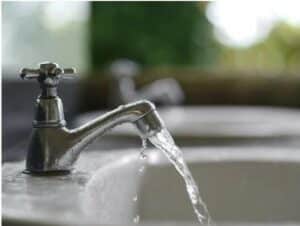Calorifier Inspection: Your Key to Compliance and Safety
Is your business taking the necessary steps to ensure the safety of its water systems and comply with regulations? If not, it’s time to consider Dantek’s complete calorifier inspection services. We understand the importance of maintaining a clean and safe water supply, and our expert team is here to help you achieve just that.
The Importance of Calorifier Inspections
Calorifiers play a crucial role in providing hot water for various commercial applications. However, over time, these systems can become breeding grounds for harmful bacteria, including Legionella. To combat this risk and maintain a healthy environment, regular inspections and cleaning are essential.
According to HSG274 Table 2.1, annual internal inspections of calorifiers are necessary, involving the removal of inspection hatches or the use of a boroscope. Cleaning is performed by draining the vessel, and the inspection frequency can be adjusted based on findings. In some cases, acid descaling may also be required to address the buildup of calcium scale. Dantek ensures a thorough inspection process, meticulously checking for debris, temperature, and clarity while adhering to industry guidelines.
Compliance with Regulations
By choosing Dantek for your calorifier inspections, you’re not only ensuring the safety of your staff and customers but also complying with key regulations. The Health and Safety at Work Act 1974 (HASAWA), COSHH regulations, and the Management of Health and Safety Regulations emphasize the importance of effective Legionella management. Our services align with the guidance provided by the Health and Safety Executive, ACoP L8, and HSg274, ensuring that your systems remain clean and free from debris.
What We Offer
When you opt for Dantek’s calorifier inspection services, you receive a comprehensive package designed to cover all your needs. Our service includes:
- Full Drain Down: We start by thoroughly draining each system, preparing it for inspection and cleaning.
- Visual Inspection: Our experts meticulously examine the internal components of the calorifier, identifying any potential issues.
- Thorough Cleaning: We clean the vessel, removing any debris and ensuring optimal performance.
- Disinfection: To eliminate bacteria and ensure a hygienic system, we conduct a thorough spray disinfection.
- Re-Sealing: After inspection and cleaning, we re-seal the calorifier to ensure its watertight integrity, including replacing seals and gaskets as needed.
- Real-Time Monitoring: Our electronic system allows you to access real-time updates on completed works and recommendations.
- Certification: You’ll receive a certification confirming that the inspection and cleaning have been successfully carried out.
Partner with Dantek for Peace of Mind
At Dantek, we take pride in offering comprehensive and reliable calorifier inspection services. Our experienced team follows meticulous procedures to ensure your systems are safe, compliant, and ready to deliver clean hot water.
Note: All our services are performed in accordance with our current method statements, specifically designed to ensure compliance and safety.
Ready to ensure the safety and compliance of your business’s water systems? Get in touch with us today to schedule your comprehensive calorifier inspection. Our expert team is here to assist you every step of the way.
Contact Information:
Phone: 01454 417 920
Email:sales@dantek.co.uk
Follow us on Linked in for the latest updates and industry insights.

 Let’s explore this essential practice and its significance in safeguarding the health of all individuals who utilize sports facilities.
Let’s explore this essential practice and its significance in safeguarding the health of all individuals who utilize sports facilities.